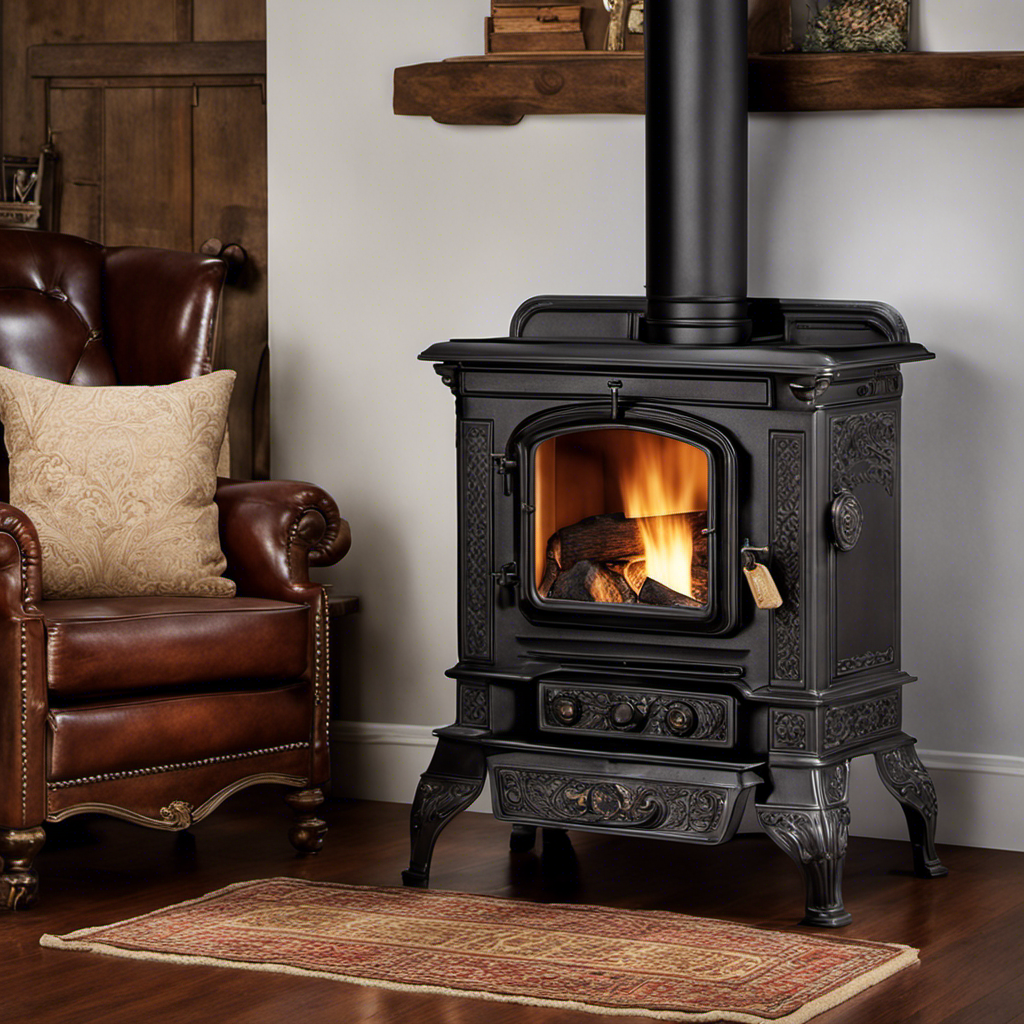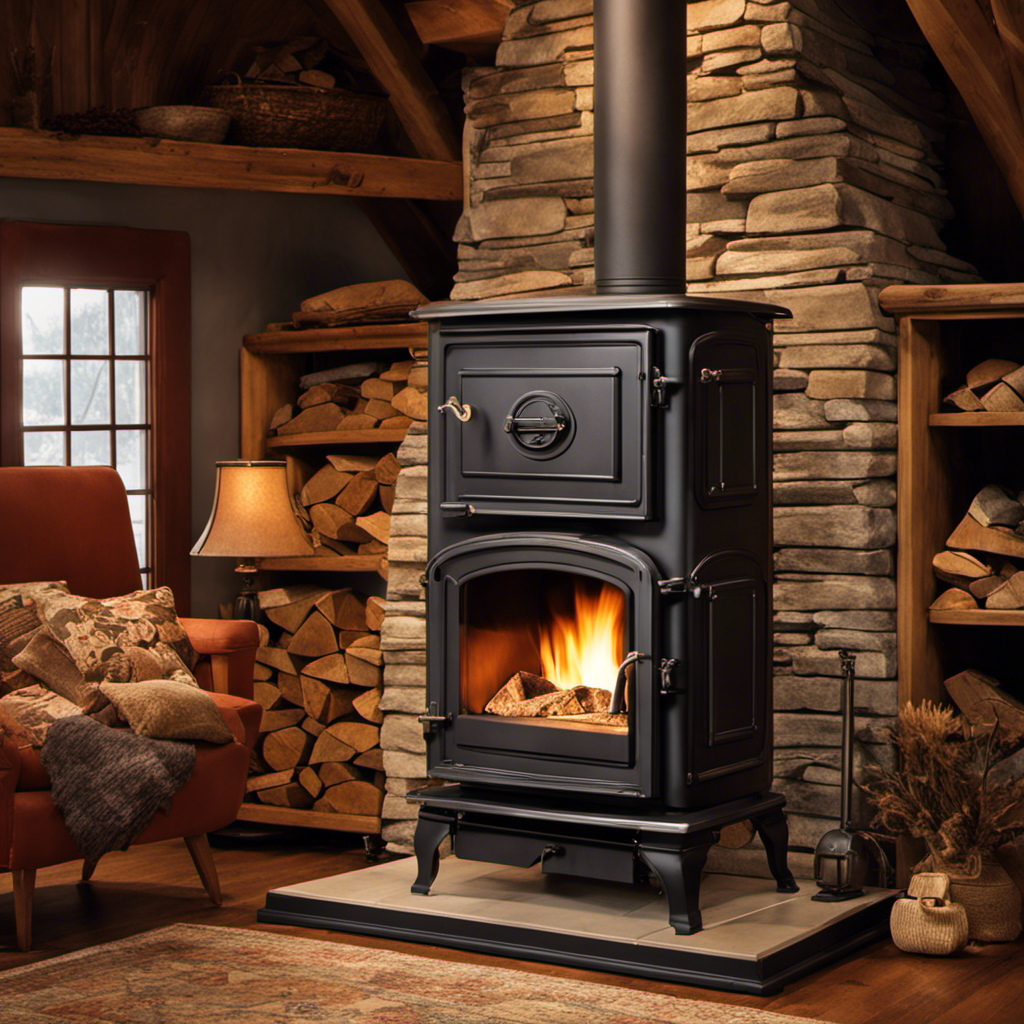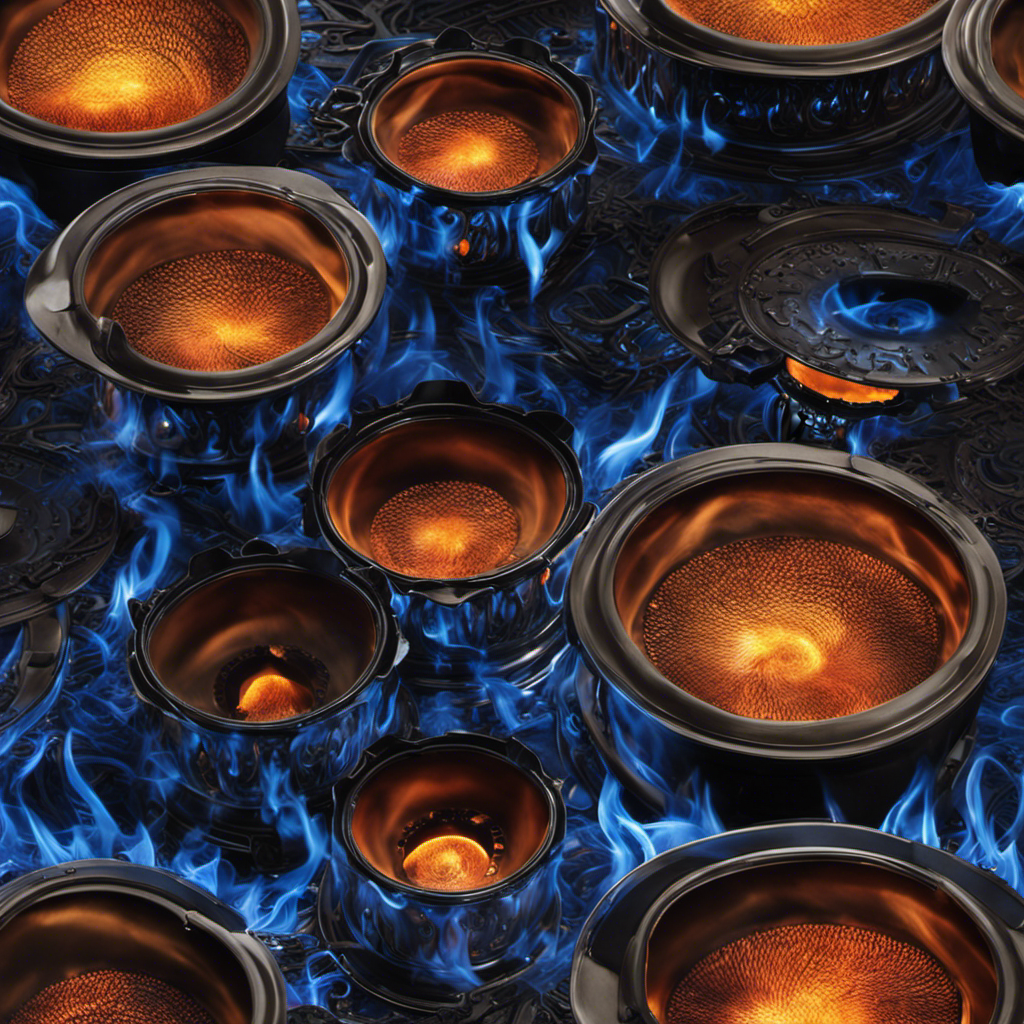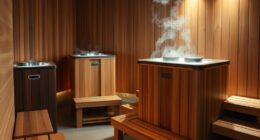Being someone who values antique items, I have always been intrigued by the charming appeal and practicality of the compact Franklin wood stove.
But how do you make the most of this piece of history? In this article, I’ll guide you through the process of using your antique small Franklin wood stove with confidence and ease.
From assessing its condition to maintaining the ideal temperature, I’ll provide you with all the knowledge and tips you need to enjoy the warmth and nostalgia this stove has to offer.
Key Takeaways
- Assess the age, condition, and rarity of the stove to determine its value.
- Clean and inspect the interior and exterior of the stove to address any issues and prolong its lifespan.
- Gather the necessary materials and choose the right type of wood for a clean and efficient burn.
- Control airflow and fuel to maintain the ideal temperature and heat output, using seasoned hardwood for longer burn times.
Assessing the Condition of Your Antique Small Franklin Wood Stove
I’m assessing the condition of my antique small Franklin wood stove, and it looks like it’s in pretty good shape. Evaluating the value of such a stove involves considering its age, condition, and rarity. The restoration process plays a crucial role in determining its worth.
To assess the stove, I begin by inspecting its exterior for any signs of damage or wear. I check the stove’s cast iron body for cracks, rust, or missing parts.
Next, I examine the stove’s interior, including the firebox, grates, and ash pan. I ensure that all components are intact and functioning properly.
Lastly, I evaluate the stove’s overall appearance and cleanliness. A well-maintained stove can significantly increase its value.
Preparing the Stove for Use: Cleaning and Inspecting
After assessing the condition of my antique small Franklin wood stove, I begin preparing it for use by cleaning and inspecting the stove’s interior components. This step is crucial to ensure that the stove operates efficiently and safely.
First, I clean the stove’s interior using a soft brush or vacuum to remove any dust, soot, or debris. Then, I carefully inspect the stove’s parts, such as the firebox, grates, and chimney, for any signs of damage or wear.
By restoring the appearance and addressing any issues, I can prevent potential problems and prolong the lifespan of my beloved stove. Troubleshooting common issues, such as draft problems or leaking joints, is essential to ensure optimal performance.
With the stove now clean and inspected, I’m ready to move on to the next step: building and lighting a fire in my antique small Franklin wood stove.
Building and Lighting a Fire in Your Antique Small Franklin Wood Stove
Before building and lighting a fire in my antique small Franklin wood stove, I carefully gather the necessary materials such as kindling, newspaper, and firewood.
When it comes to fuel options for my stove, I always choose the right type of wood to ensure a clean and efficient burn. Hardwoods like oak, maple, and birch are ideal choices as they burn longer and produce more heat compared to softer woods like pine. It’s important to avoid using wood that’s wet or has been treated with chemicals, as this can create excess smoke and potentially damage the stove.
As for troubleshooting, common issues when lighting a fire in an antique Franklin wood stove include difficulty in getting the fire started or maintaining a consistent flame. To overcome these problems, ensure proper airflow by opening the damper and using smaller pieces of kindling to ignite the fire. Regular cleaning and maintenance of the stove will also help prevent any issues from arising.
Maintaining the Ideal Temperature: Controlling Airflow and Fuel
I adjust the damper and add more fuel to maintain the ideal temperature in my antique small Franklin wood stove. As an experienced user, I’ve learned the importance of controlling heat distribution and choosing the right wood fuel for optimal performance.
Here are some key points to consider:
-
Controlling Heat Distribution:
-
Use the damper to regulate airflow and control the intensity of the fire.
-
Position the wood logs strategically to ensure even heat distribution.
-
Keep the stove clean and free from obstructions to allow proper airflow.
-
Use a heat-resistant barrier to protect surrounding walls and furniture.
-
Choosing the Right Wood Fuel:
-
Select seasoned hardwood, such as oak or maple, for longer burn times and consistent heat output.
-
Avoid softwoods like pine, as they burn quickly and produce less heat.
-
Ensure the wood is properly dried to reduce smoke and creosote buildup.
Safety Measures: Tips for Operating Your Antique Small Franklin Wood Stove
The key to safely operating your antique small Franklin wood stove is to regularly clean the chimney to prevent creosote buildup.
Safety precautions are essential when using any wood stove, especially an antique one. Proper ventilation is crucial to prevent the buildup of harmful gases like carbon monoxide. It’s recommended to have a carbon monoxide detector installed near the stove.
Additionally, make sure the stove is placed on a non-combustible surface and keep flammable materials at a safe distance. Always use dry, seasoned wood to prevent excessive smoke and sparks. Regularly inspect the stove for any cracks or damage and have them repaired immediately.
In case of a fire, keep a fire extinguisher nearby and know how to use it. Follow these safety measures to enjoy the warmth and beauty of your antique small Franklin wood stove with peace of mind.
Conclusion
After carefully assessing the condition and preparing the antique small Franklin wood stove, you can now enjoy the cozy warmth it provides.
As the flames dance and crackle, the nostalgic aroma of burning wood fills the room, transporting you to a simpler time.
With precise control of airflow and fuel, you can maintain the ideal temperature, ensuring a comfortable and safe experience.
Embrace the charm and beauty of this timeless piece, creating memories that will last a lifetime.











